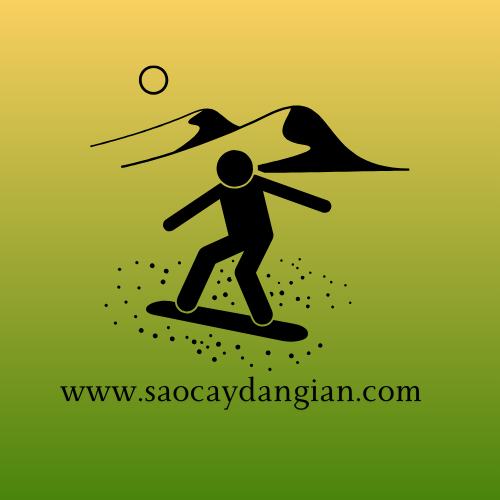
“Discover the Top 5 popular forms of sandboarding and the differences you need to know! This article will help you learn about the different types of sandboarding and the differences between them.
An introduction to sandboarding and the importance of understanding the common forms of sandboarding

Sandboarding is a very popular and attractive outdoor activity. It not only brings joy and relaxation but also helps improve health and increase body flexibility. Understanding the popular forms of sandboarding not only helps players enjoy the best experience but also ensures safety for themselves and others.
The importance of understanding the common forms of sandboarding
Understanding the popular forms of sandboarding helps players understand the playing environment, safety rules and the correct way to move. This helps them avoid unwanted accidents and enjoy the safest sandboarding experience. In addition, understanding the different forms of sandboarding also helps players choose a skating style that suits their preferences and abilities, thereby enjoying the game to the maximum.
Form of sandboarding number 1: Traditional sandboarding
Traditional sandboarding is one of the most popular forms of sandboarding and is loved by many people. This sandboarding technique is simple, players just need to stand on the sandboard and slide downhill according to the terrain. This creates a feeling of suspense and excitement for players.
Advantages of traditional sandboarding:
- Simple and easy to learn
- Suitable for beginners
- Low price
Traditional sandboarding does not require much technical skill, so it is suitable for everyone from children to adults. This makes this form of sandboarding more popular and accessible.
Form of sand skiing number 2: Artistic sand skiing
Sandboarding is a form of sandboarding at the beach performed with the purpose of creating curves and circles in the sand. Players will use a sandboard to create images and patterns on the sand. This requires the player to have skill and flexibility to control the sandboard as desired.
Artistic sandboarding techniques
There are many different techniques in sandboarding, including carving (creating smooth curves in the sand), slashing (creating circular lines), and pumping (creating curves and inclines in the sand). ). Players need to master these techniques to be able to create beautiful and impressive patterns in the sand.
In addition, artistic sandboarding also requires players to have creativity and artistic thinking to create unique and impressive drawings. Skill and technique also need to be combined with imagination to create unique works of sandboarding art.
Form of sand skiing number 3: Speed sand skiing
Speed sandboarding is a fast and fun form of sandboarding, loved by those who want to experience the thrill and speed of sand. This technique requires players to have good control skills and be ready to face high speeds on the sand. Speed sandboarding is usually done on professional sandboarding venues with steep slopes and enough space to increase speed.
Necessary skills
To perform speed sandboarding, players need to have solid control skills, quick reflexes and be ready to face high speeds on the sand. In addition, choosing a suitable sandboarding location is also very important to ensure safety and the best experience for players.
Here are some necessary skills to perform speed sandboarding:
– Good control skills on sand
– Quick reflexes
– Be ready to face high speeds
– Ability to choose a suitable sandboarding location
The above information is for reference only. To perform speed sandboarding, players need to follow safety rules and instructions from professional operators or coaches.
Form of sandboarding number 4: Long-distance sandboarding
Long-distance sandboarding is a popular form of sandboarding, where players slide on a long and often steep stretch of sand. Long-distance sand skiing requires players to have good control skills and be ready to face high speeds when sliding down. This makes the game interesting and attractive for extreme sports lovers.
How to play long-distance sand skiing
To play long-distance sand skiing, players will stand at the top of the slide, push themselves down and maintain balance to maintain speed and direction. When sliding down, players need to be flexible and ready to adjust their posture and body weight to avoid falling and maintain stability on the slide.
Here are some basic skills needed to play long-distance sandboarding:
– Skills to maintain balance and control sliding speed
– Flexible skills and willingness to adapt to ski terrain
– Quick reaction skills and readiness to respond to unexpected situations when sliding down.
Playing long-distance sandboarding not only helps improve health but also brings joy and challenges to players.
Type of sandboarding number 5: Sandboarding on sand and water and the differences you need to know between different forms of sandboarding
Sandboarding on water sand is a unique form of sandboarding, where players can slide on a flat sand surface that is sprayed with water to create a smooth and smooth surface. The biggest difference between sandboarding on water sand and traditional sandboarding is smoothness and speed. Sandboarding on sand and water often allows players to slide faster and have a smoother experience on the sand surface.
Differences between water sandboarding and traditional sandboarding:
- Smoothness: Sand skiing on water sand is more smooth than traditional sand skiing due to the spray of water on the sand surface.
- Speed: Players can achieve higher speeds when sandboarding on sand and water, creating a new and more exciting experience.
- Experience: Sandboarding on water sand provides a smoother, more attractive experience than traditional sandboarding.
Sandboarding on water sand provides a new and exciting experience for players, and the difference in smoothness and speed are important factors to know when participating in this form of sandboarding.
Sandboarding has many forms such as mountain sandboarding, tourist sandboarding and seaside sandboarding with differences in environment, difficulty and experience.



